The Casa de Pilatos in Seville is itself a piece of art. Built in the late 15th century, it is a blend of Moorish, Gothic and Renaissance architecture depicting the multicultural style from that time. This makes it an excellent introduction into Andalusia, with its multicultural style. The palace is also surrounded by a colorful garden (even in winter) offering a tranquil setting inside a lively city. The exterior doesn’t hint at the vibrant, yet tranquil life found inside. This is another site you have to go inside, to appreciate. We were really happy we included the Casa de Pilatos in our Seville itinerary.
The architectural marvel of Casa de Pilatos
The palace was built in the late 15th century and is famous for its fusion of architectural styles. The palace is adorned with intricate stonework, vibrant Moorish tilework, highly detailed wooden ceilings, and beautiful courtyards and gardens.
Courtyards such as this were the heart of the Andalusian home. It provided a central space to gather and connected the different parts of the residence. Many areas of the palace open up to this courtyard, and it allows air and light into the rooms. While certainly functional, this particular courtyard is extravagantly adorned in decoration to showcase the owners wealth.
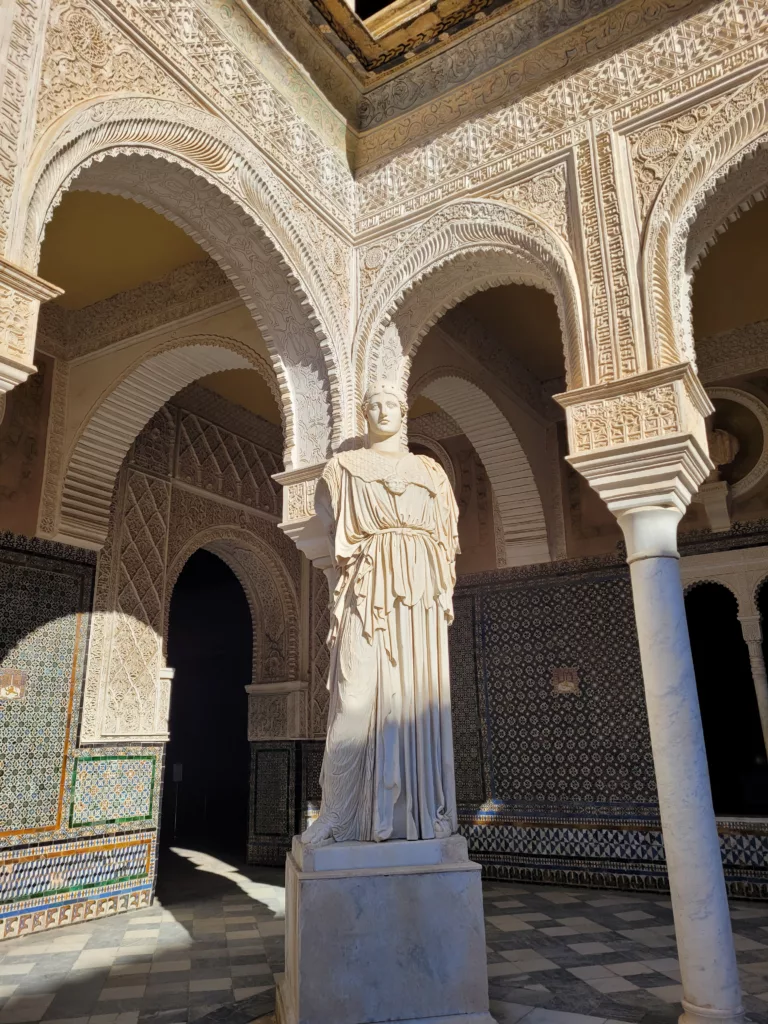
Photo above: One of the classical statues in the overseeing the courtyard of Casa de Pilatos.
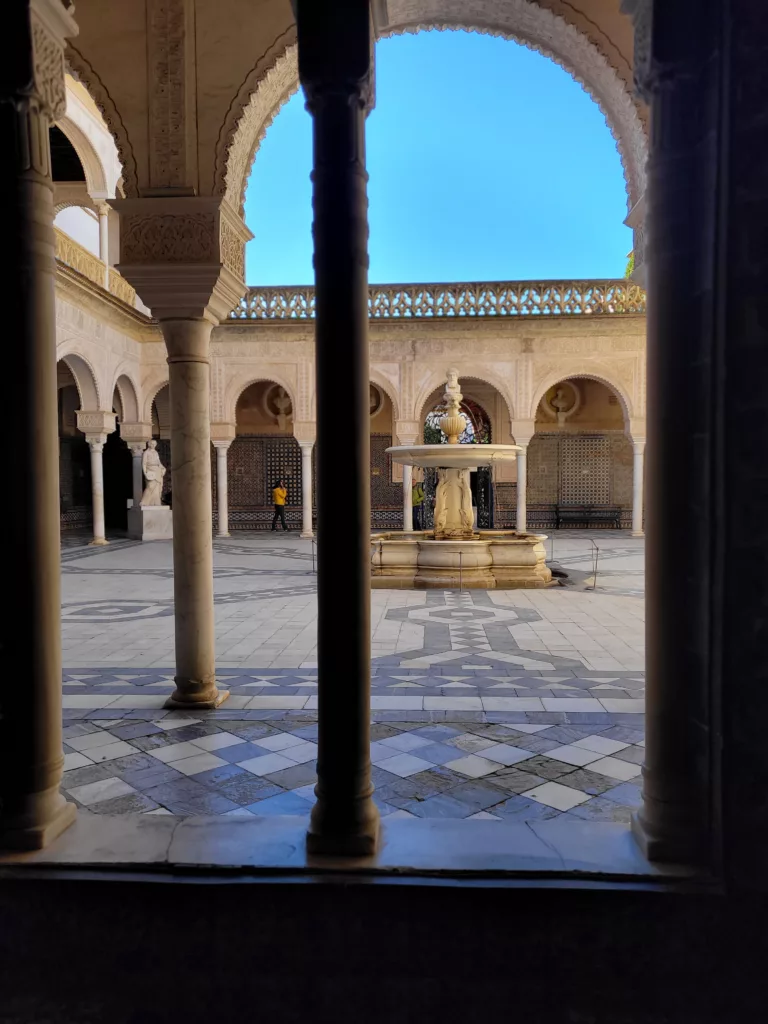
Photo above: The view from inside the residence, looking into the courtyard.
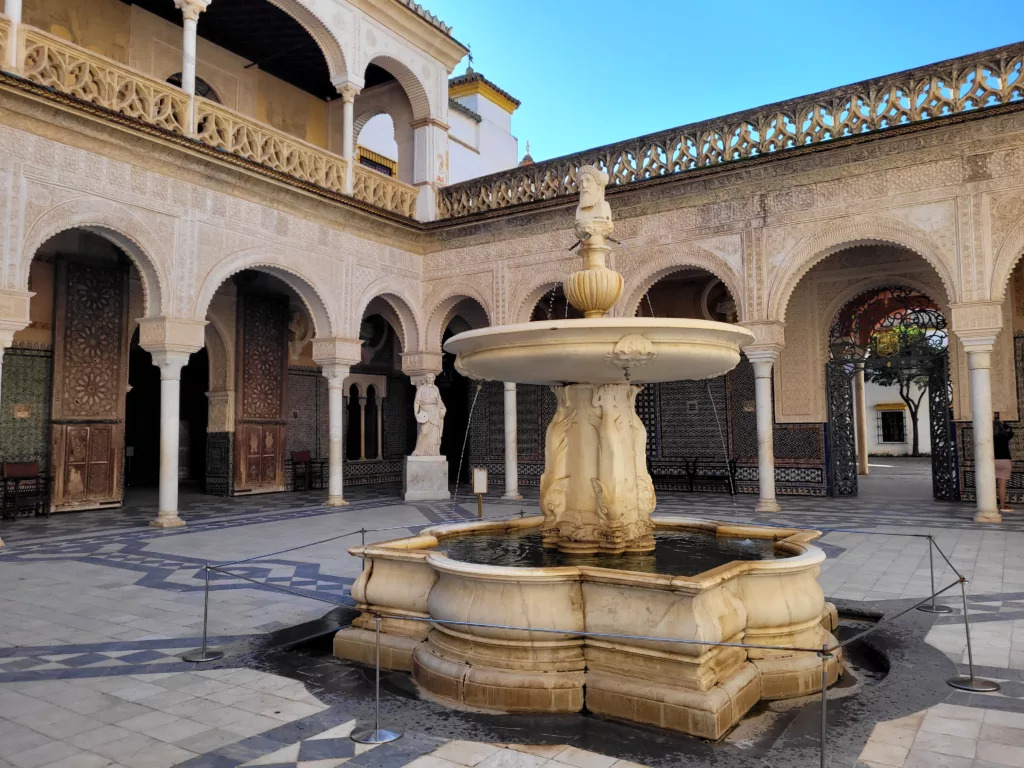
Photo above: The courtyard of Casa de Pilatos which is said to be one of the most beautiful courtyards in Seville. The symmetric courtyard is framed by columns and arches of an Italian renaissance nature, but adorned with an intricate Moorish design. It has a beautiful central fountain and home to classical statues.
Imagining what it was like to live here
I like to imagine visiting historic places in their prime, when historical places were homes instead of museums. The Casa de Pilatos was built by Pedro Enriquez and his wife Catalina de Ribera who were members of Seville’s nobility. This palace was built for their eldest son Fadrique, and the Palace of the Duenas (also in Seville) was built for their younger son Fernando. Pedro was Mayor Adelantado of Andalusia, and was one of the wealthiest and most influential families in Seville. There are legends explaining the palace’s name, tying it to Pontius Pilate’s house in Jerusalem. One such legend says that Pedro’s son, Fadrique Enriquez de Ribera, went on a pilgrimage to Jerusalem. He noticed a resemblance between his home and that which was believed to be the palace of Pontius Pilate in Jerusalem. So, he named this palace Casa de Pilatos. Not only is he rumored to have named the palace, but he also had ties to Italy and brought the Roman sculptures and some of the artwork home to the palace in Seville. The palace is the perfect setting, telling stories, that are likely a mix of truth and legend.
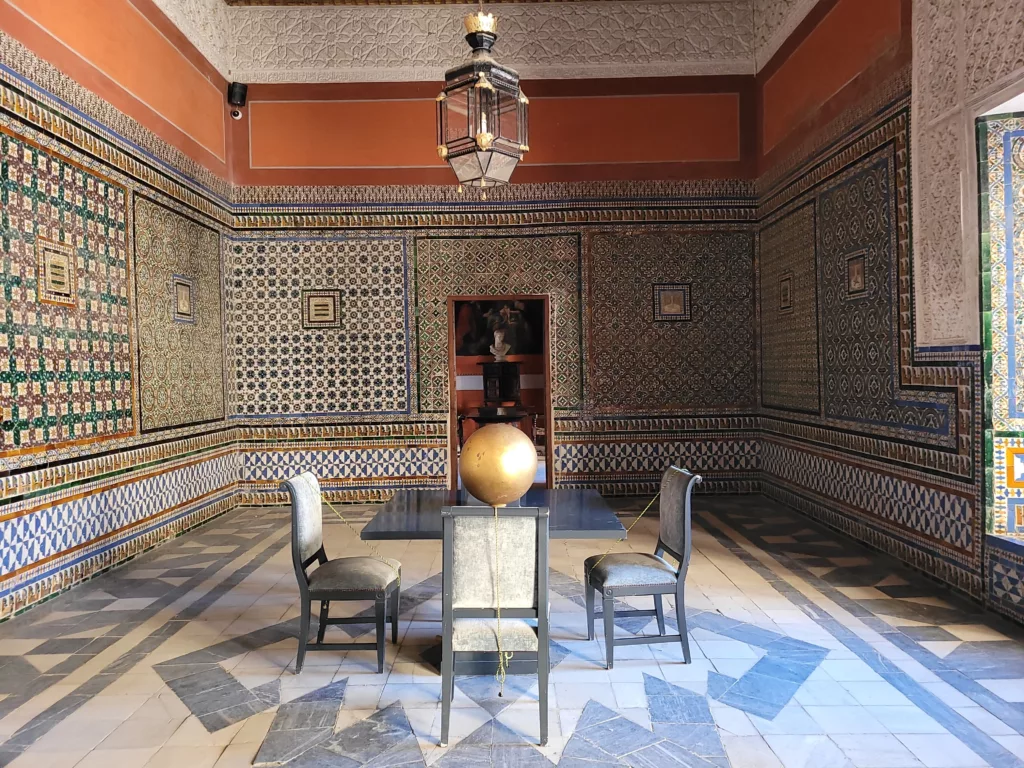
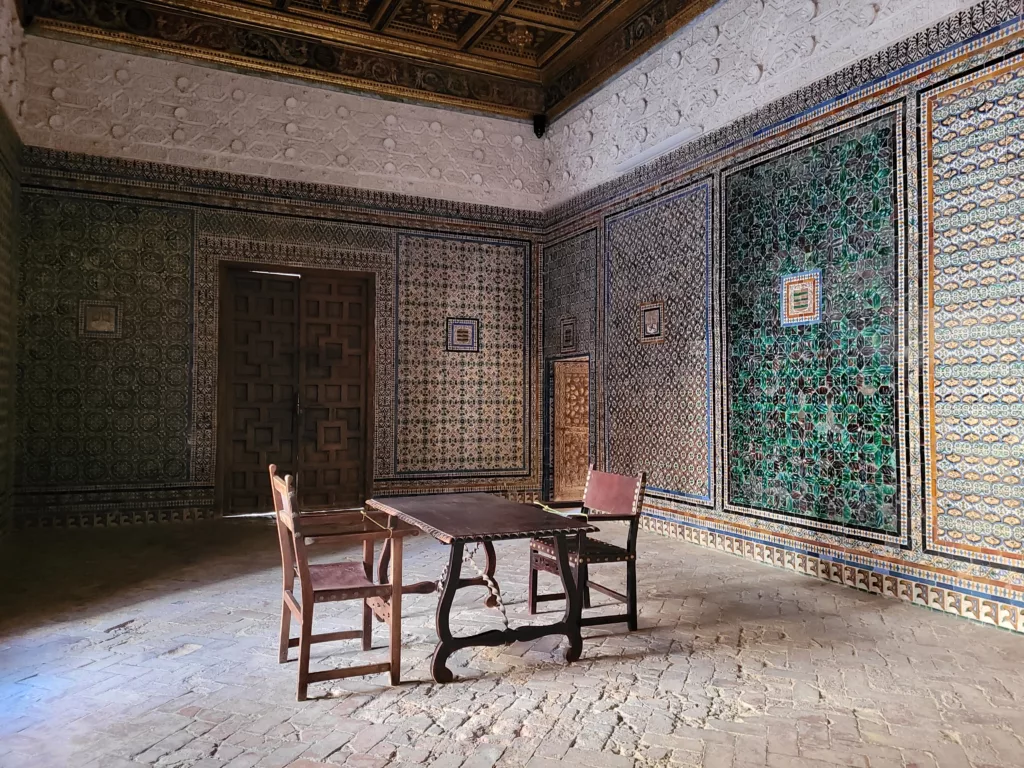
Appreciating Andalusian artistry and design
The Casa de Pilatos was my family’s introduction into Andalusian architecture. We would later see more examples at the Royal Alcazar of Seville and the Nasrid Palaces at Alhambra in Granada. Each place was so beautiful, in my opinion. I couldn’t get enough of it. While each place has a similar style, they each have their own charm. And while the Casa de Pilatos is substantially smaller than the other two examples I mentioned, it is no less intriguing. Here you actually get to walk through time and step back into an Andalusian home showcasing the best of its time period.
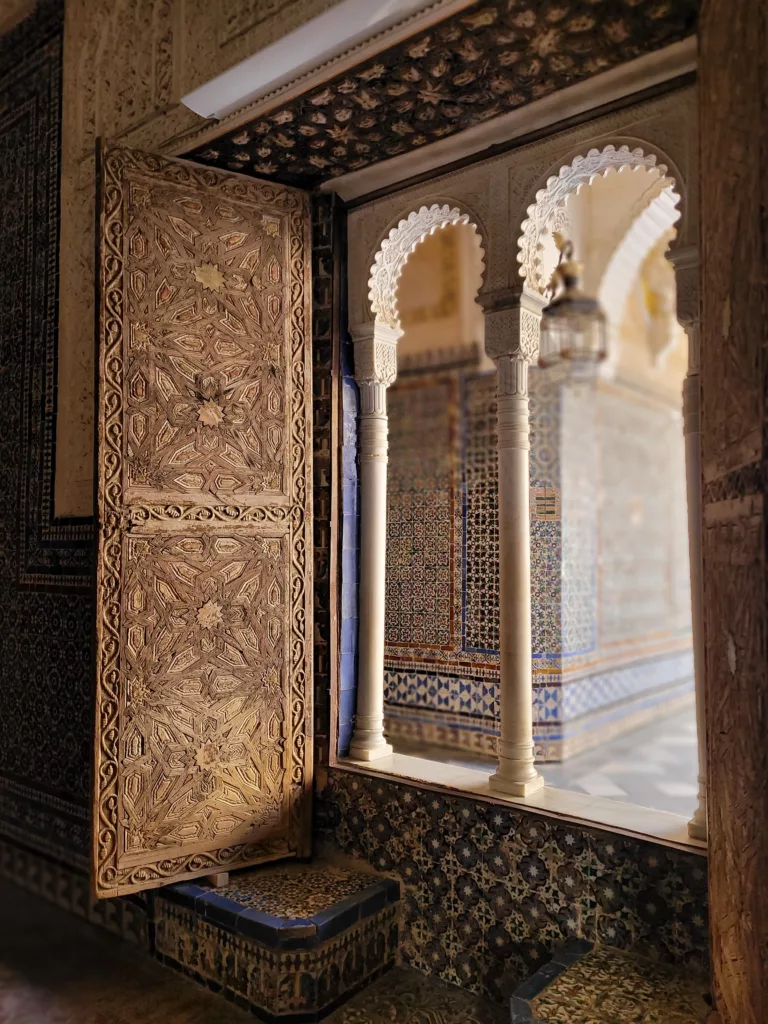
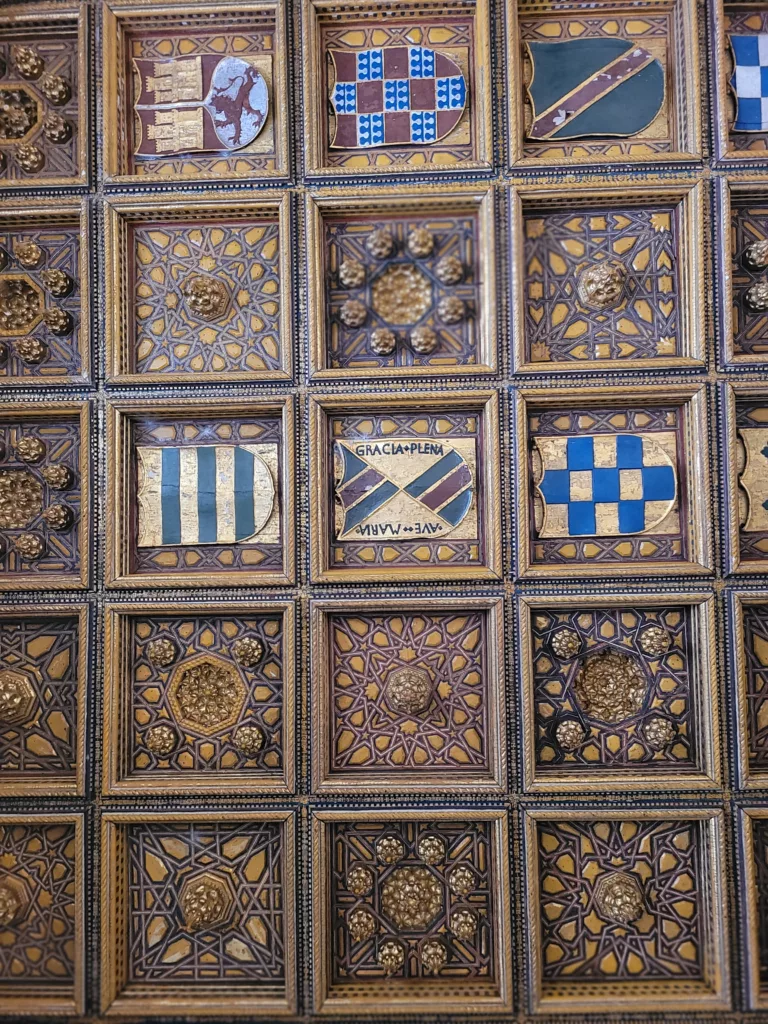
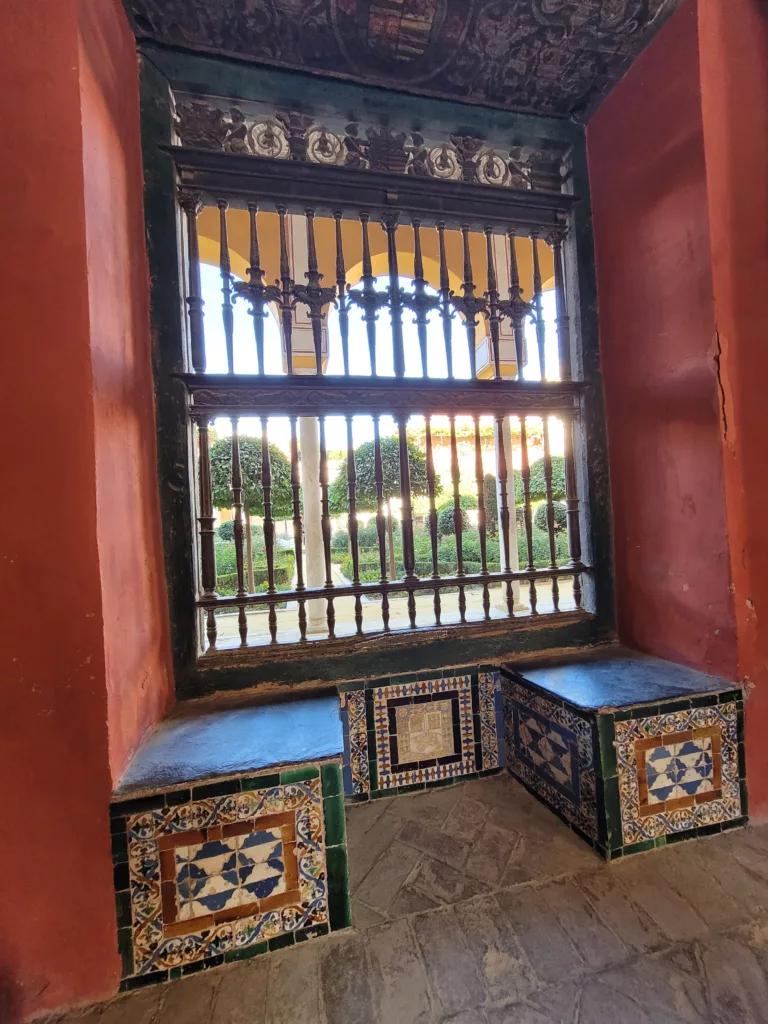
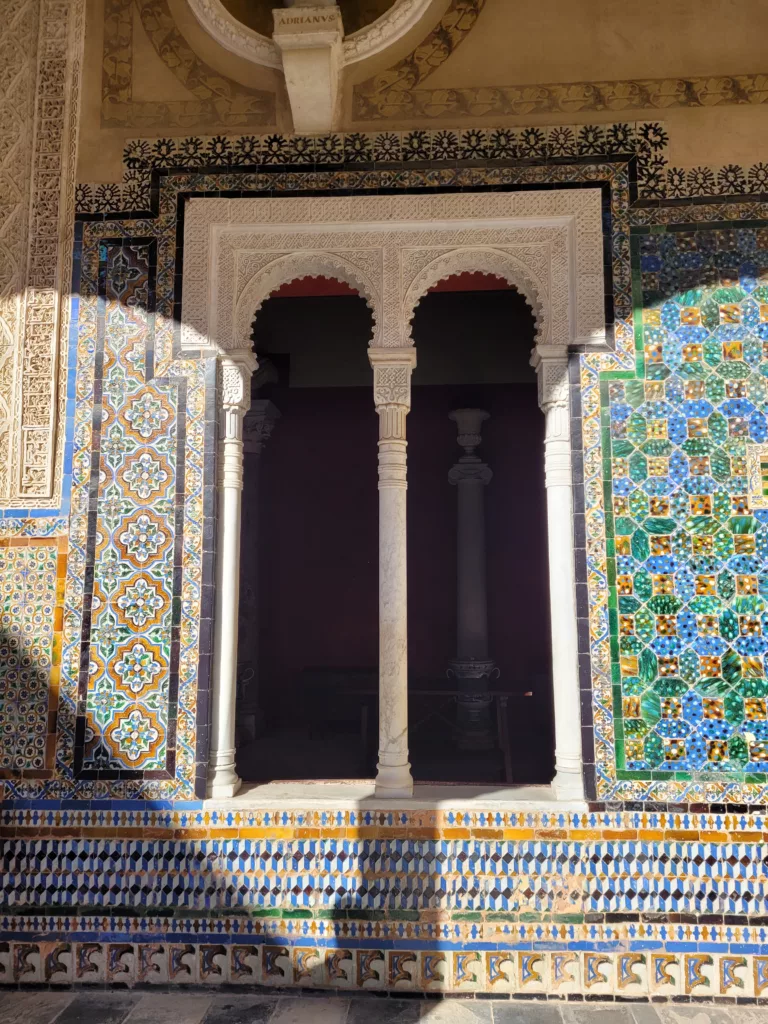
The tilework at Casa de Pilatos
The palace itself is generally beautiful. But it is the tilework, known as azulejos, that add a sense of vibrancy and richness to the place. Without the tilework, the place would be serene and a bit somber. The tilework gives the place its wholeness, bringing every space to life. For me, the tilework does the same thing for the building that flowers do for a garden. These Spanish painted, tin-glazed, ceramic tiles also have a practical application. They helped to control temperatures inside the home!
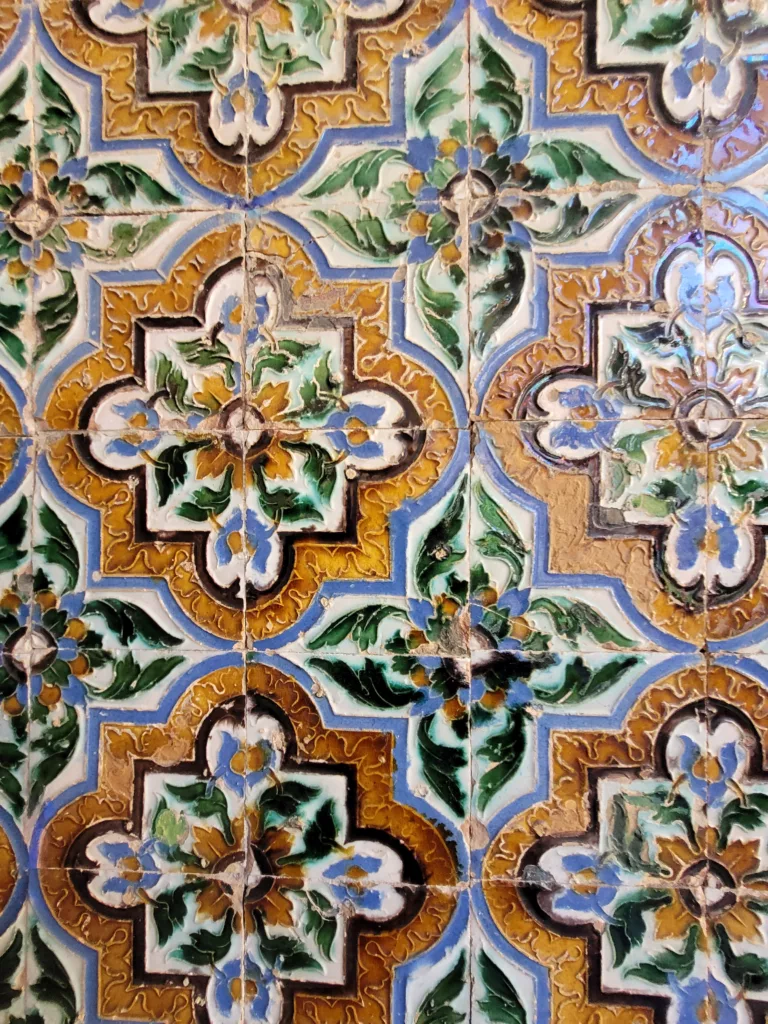
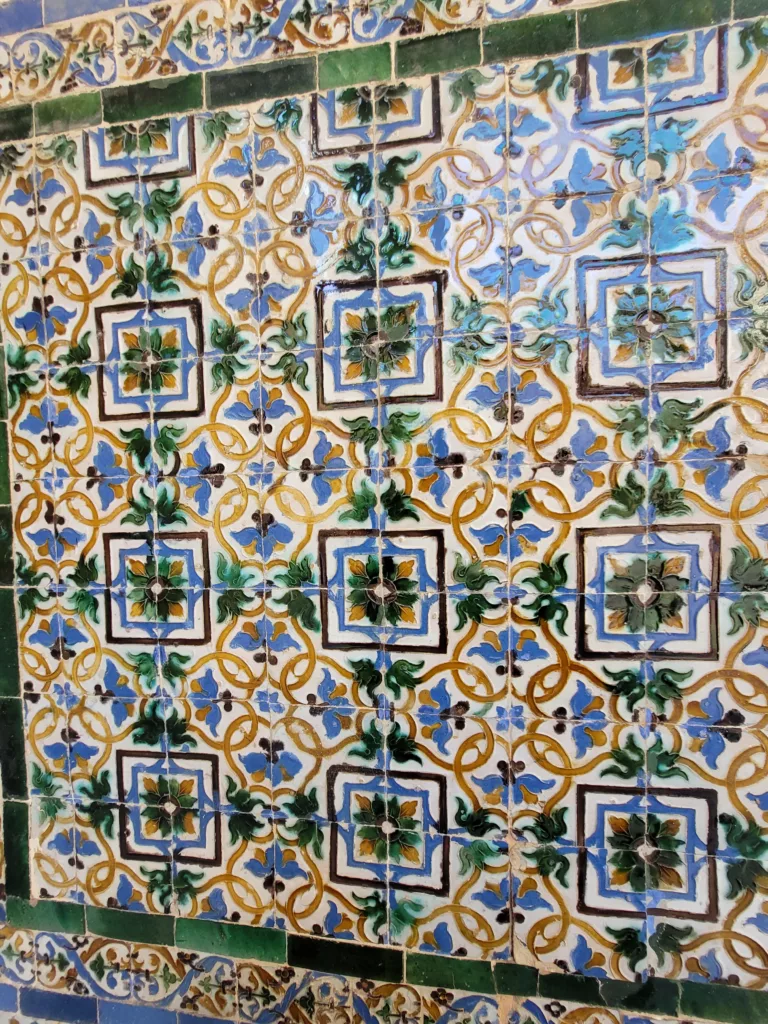
Casa de Pilatos houses an impressive collection
While the house and gardens are itself a treasure, its wealthy, well educated, and well-traveled owners filled it with many artistic and cultural treasures still on display. In addition to the Roman sculptures seen in the courtyard, we saw a number of Roman artifacts and Mudejar plasterworks adorning the palace walls. The Third Duke of Alcala who lived here had an impressive art collection.
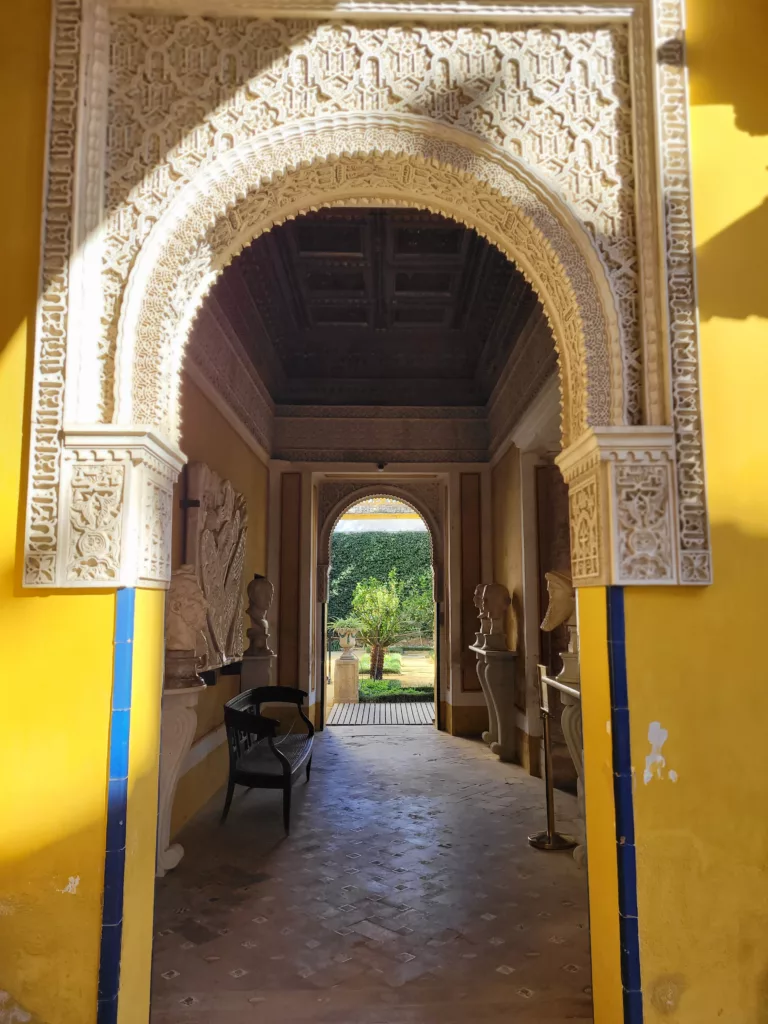
Photo above: A hallways lined with artistic and historic artifacts.
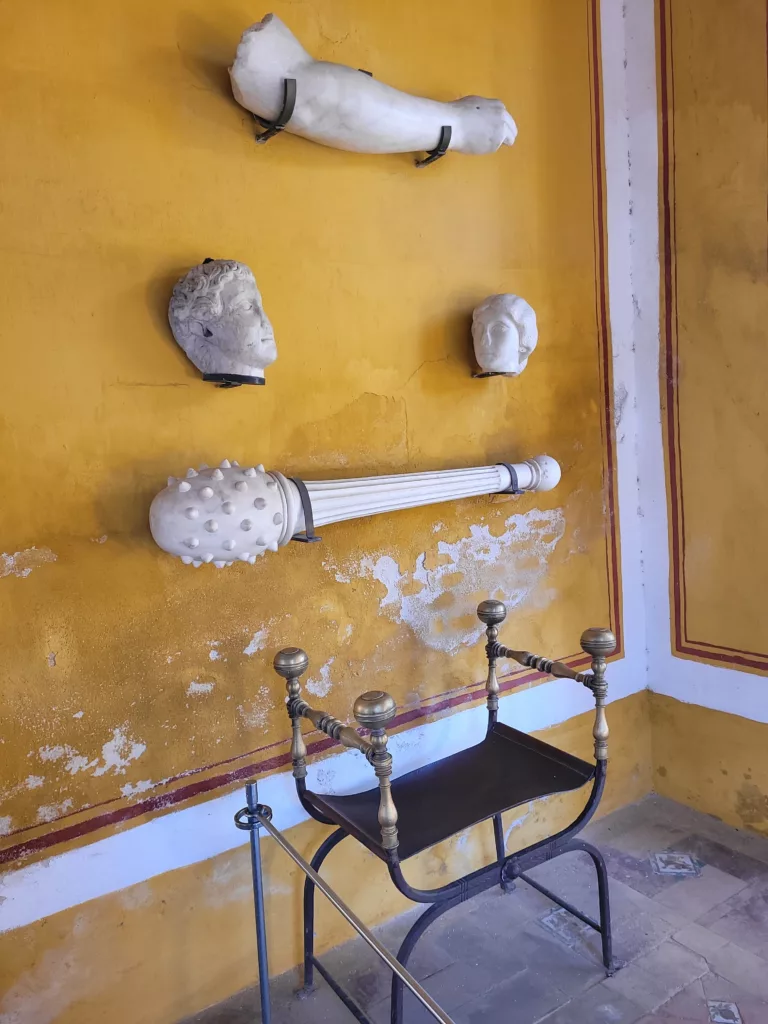
Photo above: Pieces of classic-styled artifacts from the propoerty displayed on its wall.
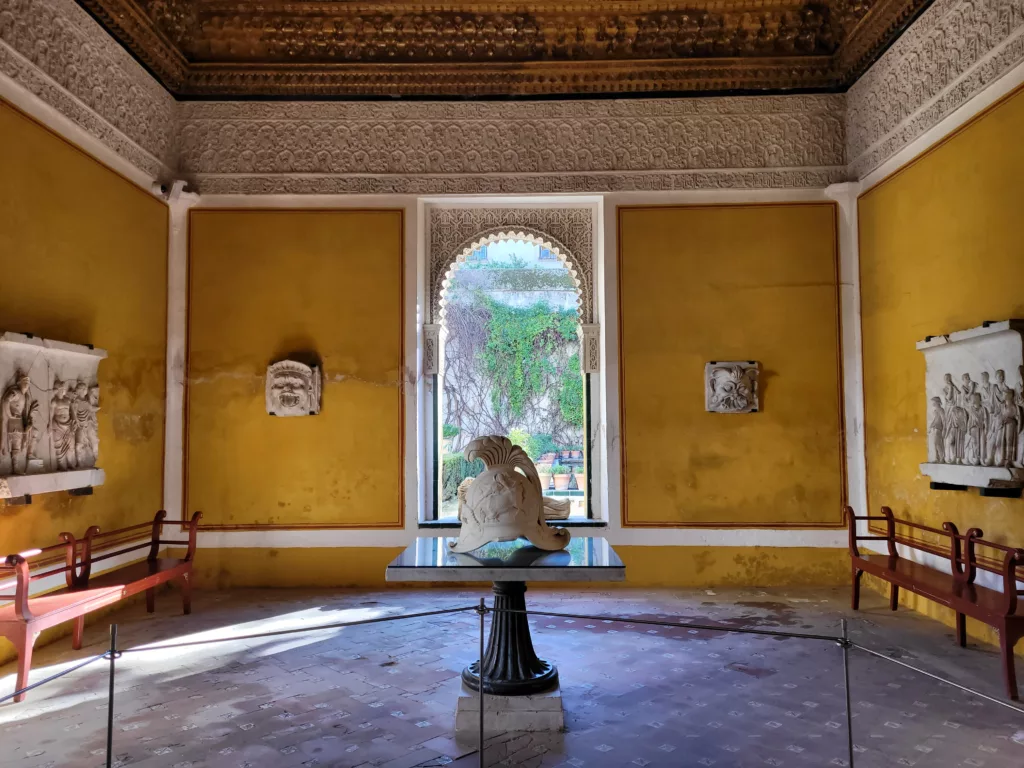
Photo above: A room adorned with classical decor on its walls and as the centerpiece, but the ceiling and floor show Moorish decor.
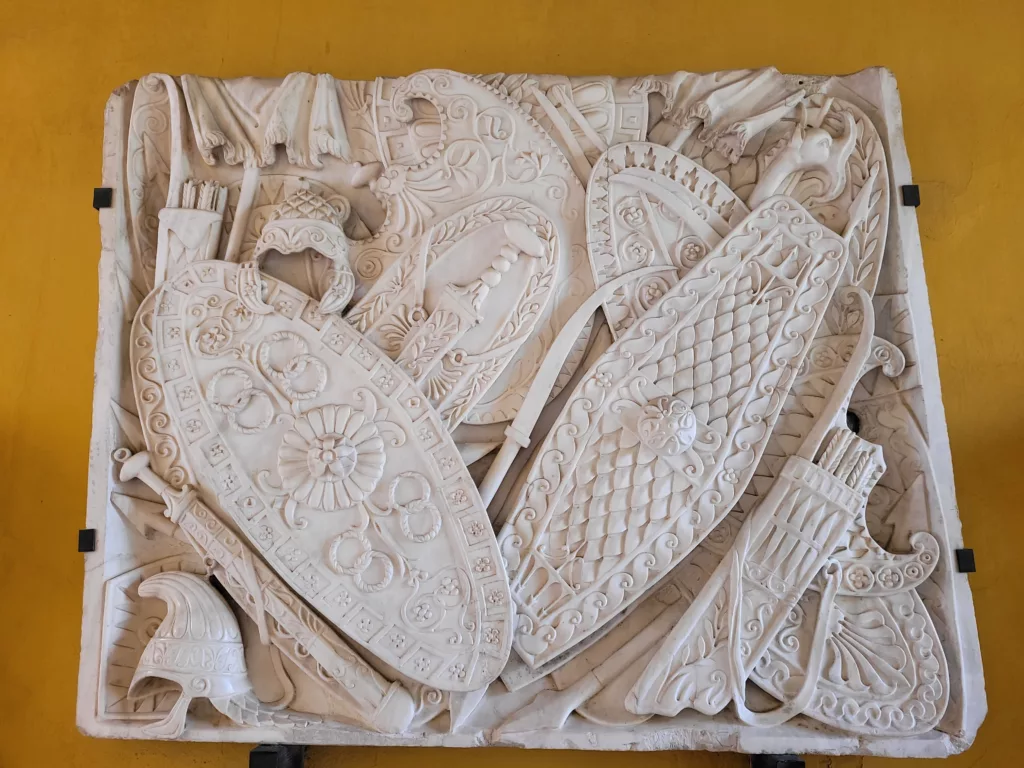
Photo above: A closeup of one of the Roman classical pieces.
The weight of the world on your back
I saw this statue in one of the rooms at Case de Pilatos. I think it depicts the Greek god Atlas holding the weight of the world on his back. Atlas is said to be a muscular god holding up the sky for eternity after the Titans lost the war to the Olympian gods. This mythological punishment was often depicted in statues of Renaissance style. This statue fits the traditional type of decor collected by European noble families.
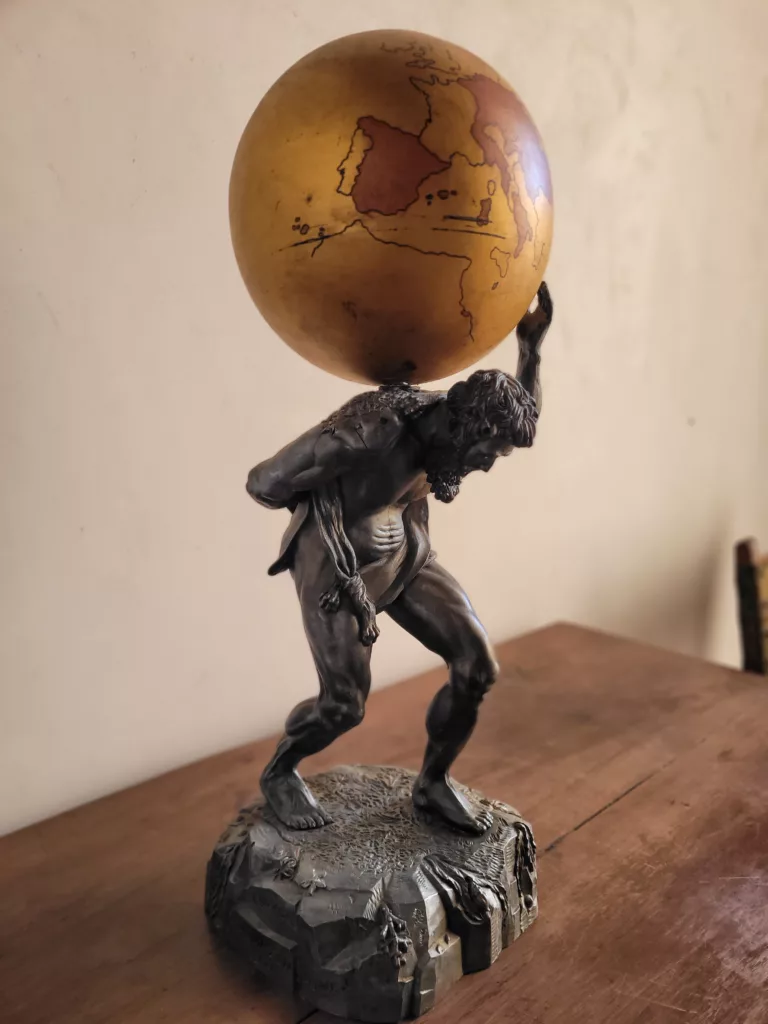
Photo above: The side view of Atlas holding the world on his back.

Photo above: The front view depicting the Greek god Atlas hold the world.
Enjoying Casa de Pilato's beautiful garden
I was really impressed with the garden. The space was well appointed, with much detail given to the smallest corner. Everything was highly symmetrical, yet delicately ornate, and coming together to embrace its visitor in perfect harmony. The thick and lush orange trees were shaped like mushroom tops, almost curtsying toward anyone walking between them on the garden path. In the center of the garden was a tranquil Moorish-style fountain decorated beautiful with intricate detail and surrounded by blue tilework. It was nice to sit on the benches and just let the moment happen, and be there, in this garden.
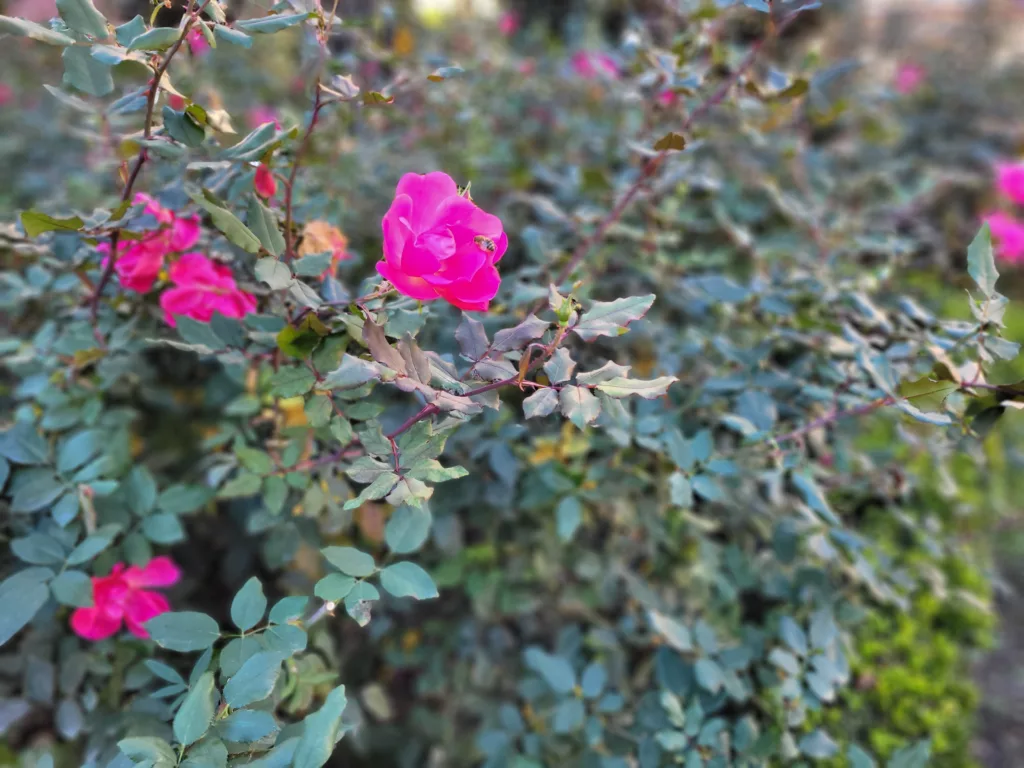
Photo above: A bee visits the roses.
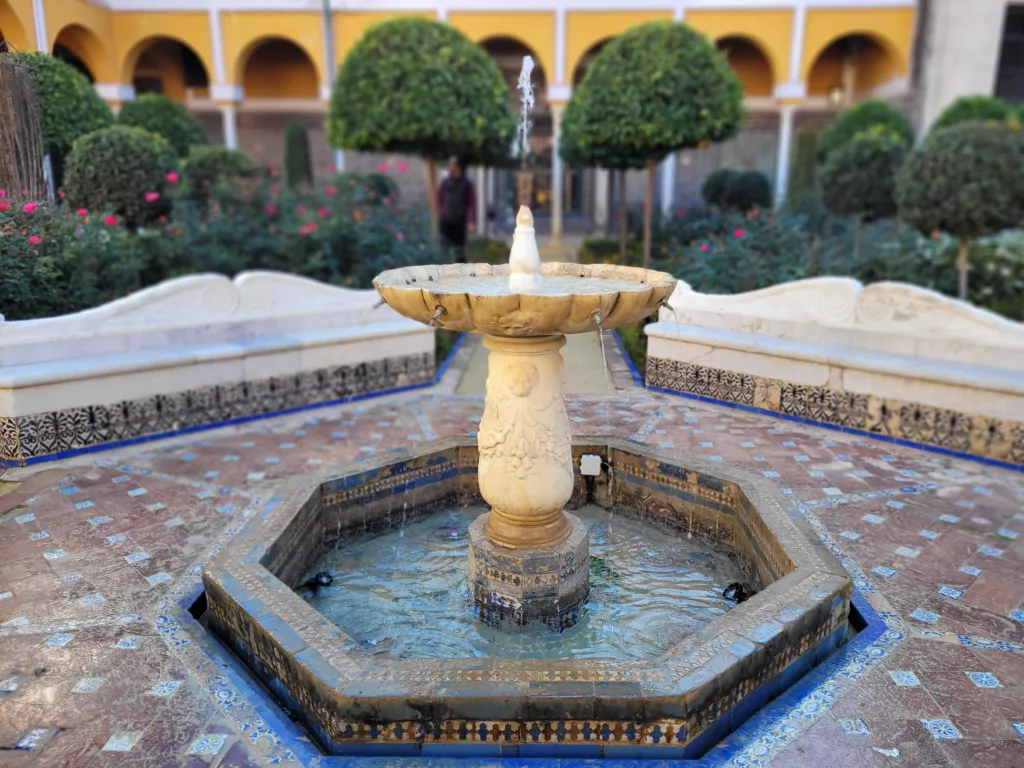
Photo above: The tranquility of water.
The perfect setting for another impromtu photo shoot
The Casa de Pilatos demands attention. It was built to be admired; this is obvious. Everything is beautiful, and it makes the perfect backdrop for silly and serious family photos. I am sure my girls left with impressive selfies too. And it’s not just the amateurs using the palace and its gardens as a backdrop. Scenes from Lawrence of Arabia (1962), Kingdom of Heaven (2005), and Knight and Day (2009) were filmed here. So don’t be shy and get your camera out for some video of your own.
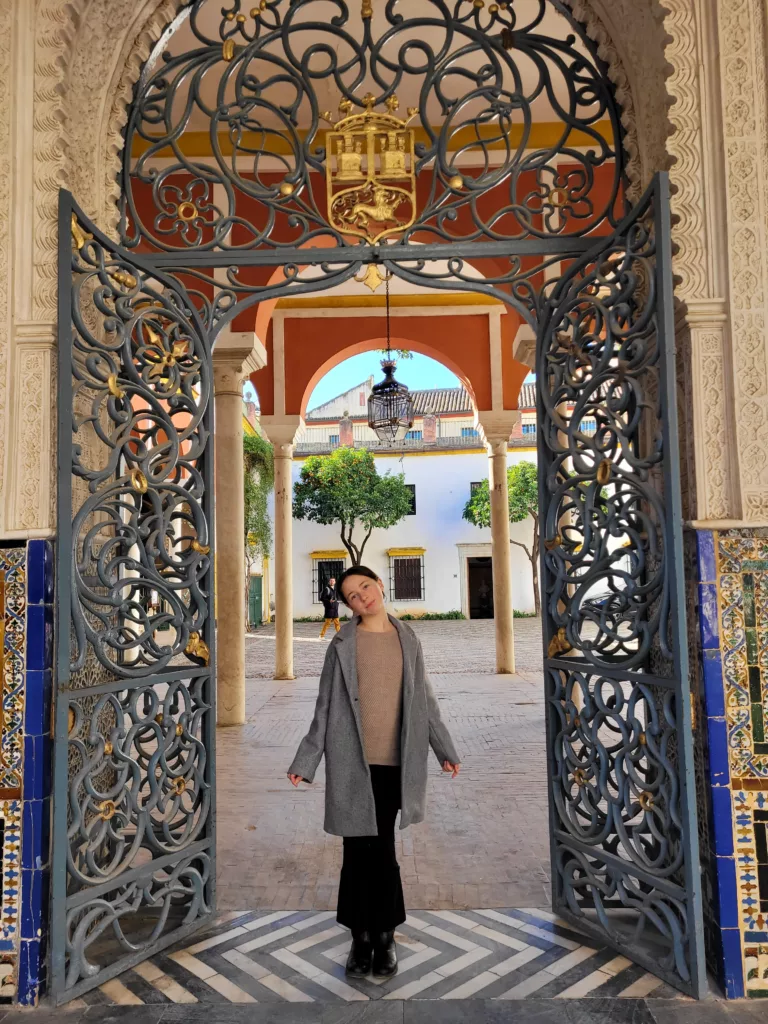
Photo above: Sophia poses for a photo in an elaborate doorway.
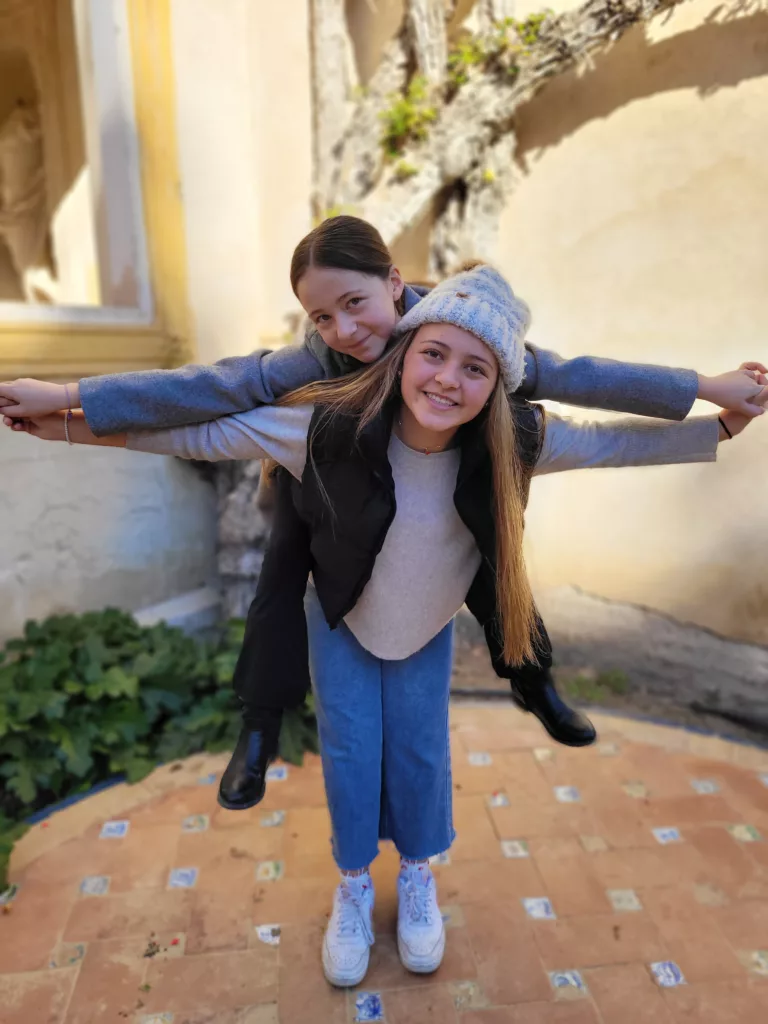
Photo above: Ava gives Sophia a ride around the garden on her back.
Photo below: Us girls pose as live statues with the backdrop of classical statues from time past.
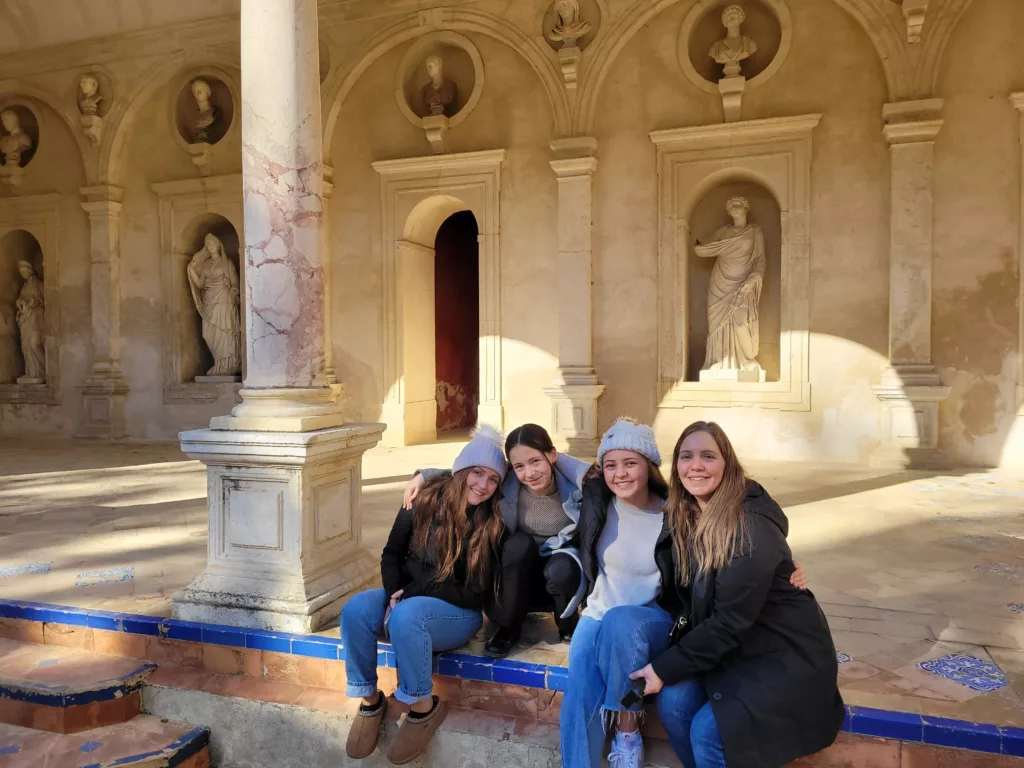
Casa de Pilatos is an ideal stop when you are in Seville
There is so much to see and do in Seville, that it can be hard to narrow down the list to fit the time you have. I know, because I was recently in that predicament. And I am pleased that we included the Casa de Pilatos in our itinerary. It had a much more relaxed vibe to it when we visited, when compared to the Alcazar of Seville. We didn’t have to purchase tickets in advance and visit at a specified time. I found this place to be an excellent place to recharge, while immersing oneself in Andalusian culture and history. When visiting here I could almost imagine what it was like so long ago, or even what it might have been like, to live here.
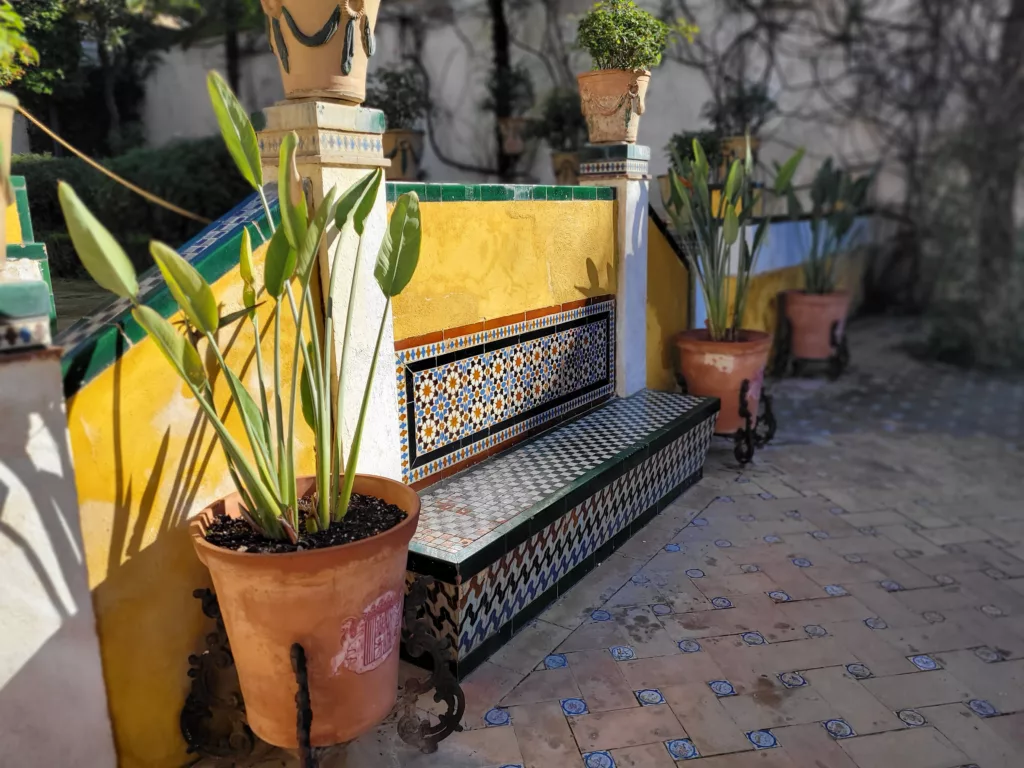
Photo above: A colorful tiled bench in a garden.
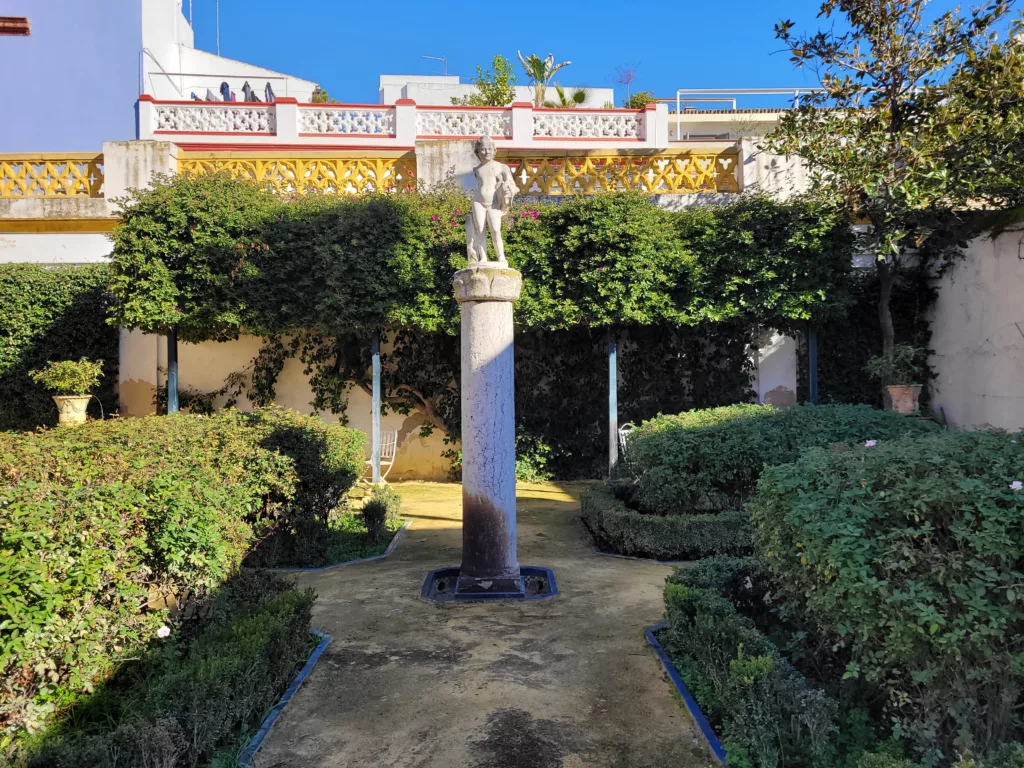
Photo above: A roman statue overlooks the garden.
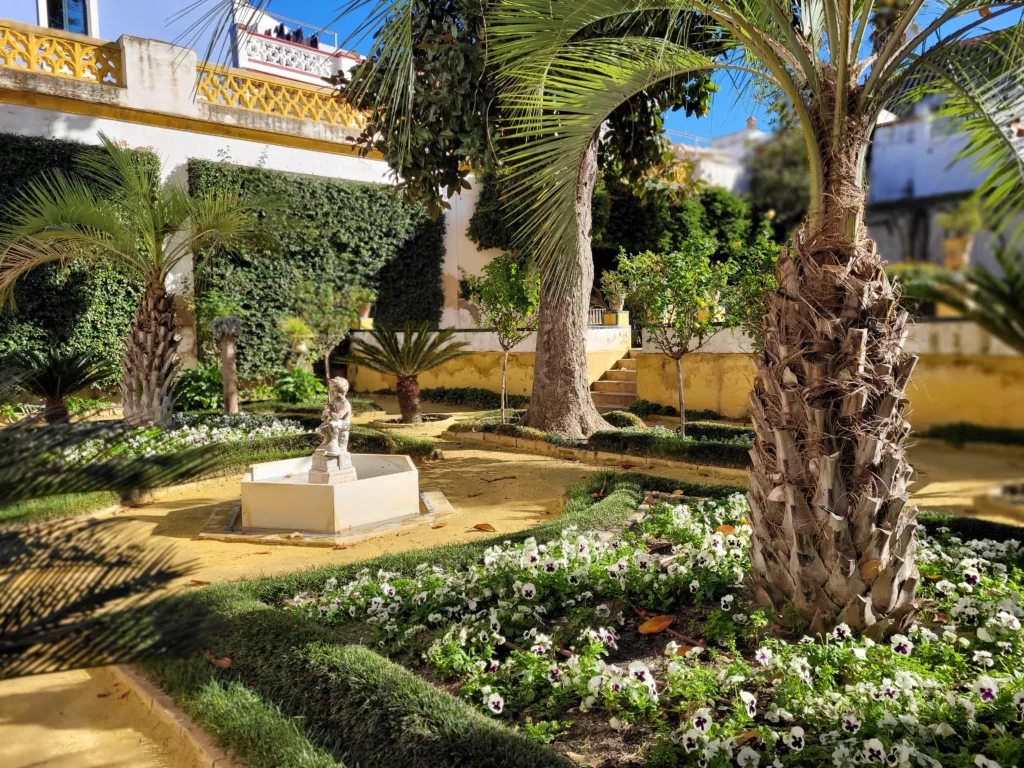
Enhance your visit with a guided tour
There are several tour options available through Viator, to enhance your experience at the Casa de Pilatos. This 45-minute tour provides an official guide, but not admission. Or there is a 2-hour tour that covers Casa de Pilatos and Casa Salinas (also in Seville). The two-hour tour also includes a knowledgeable guide but does not include admission. For art and history lovers, you can take a 2.5-hour tour with an art historian guide, and pick up and drop off at your hotel in Seville is included! This 2.5-hour tour includes Casa de Pilatos and the 16th century palace of the Countess of Lebrija.
FAQs
You can buy your tickets on the Casa de Pilatos official website. We purchased ours at the ticket desk when we arrived. We also only purchased a ticket for the ground floor. If you have the time on your visit, you can choose to purchase the supplemental ticket to also visit the upper floor.
The general ticket is 12 EUR for adults and children under 12 years old are free (as of February 2024). To add the upper floor to your visit, you must purchase the supplemental ticket for 6 EUR.
The Casa de Pilatos is open daily from 9am to 6pm.
Yes, you can visit the gift shop at the end of your visit to Casa de Pilatos. It has quite a few nice items to consider.

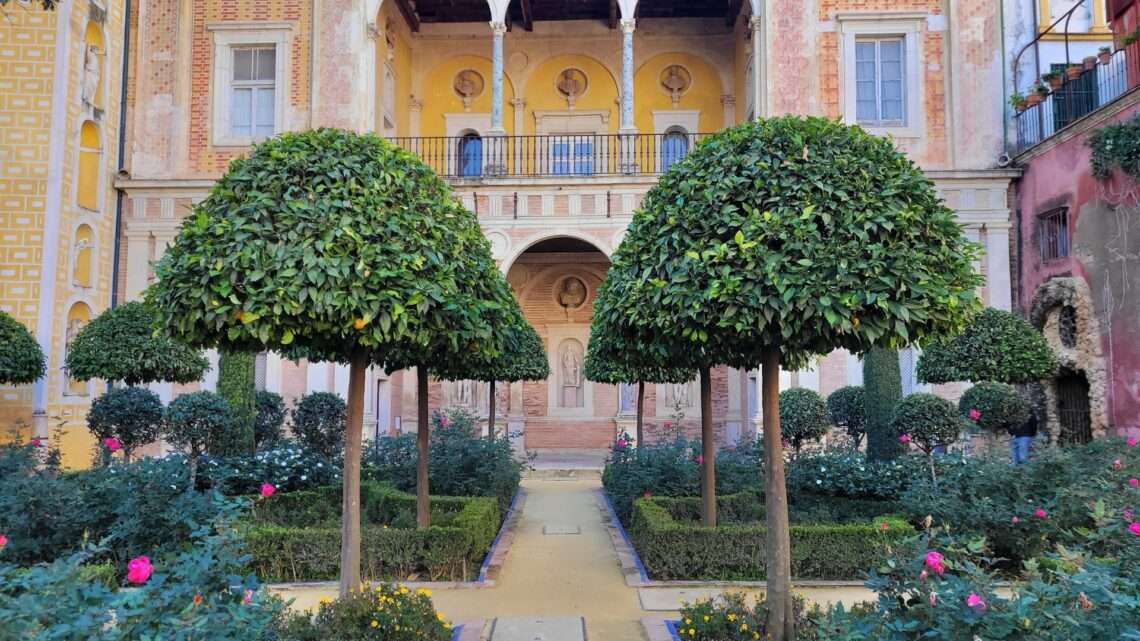



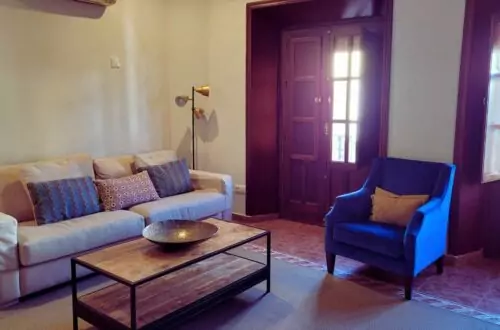

3 Comments on “Imagining life at Casa de Pilatos in Seville”